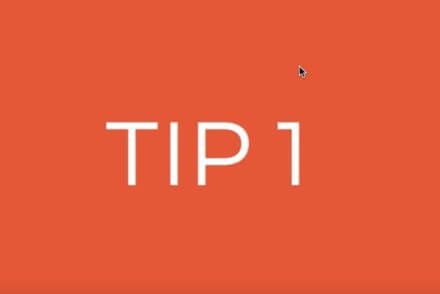As you sail the oceans of opportunity, you want your sails making the most of the winds and the rudder pointed in the right direction. You want at frequent intervals to know that you are headed in the right direction. If not, you need to have the means to do a course correction. You should be able to ride out any storms which come your way. You should have enough supplies to make the journey and also adapt on the way if required.
A good business plan does this and more.
What is a business plan?
A business plan, as defined by Entrepreneur, is a “written document describing the nature of the business, the sales and marketing strategy, and the financial background, and containing a projected profit and loss statement.”
According to guidelines from the U.S. Small Business Administration, you need to include the following:
- an executive summary
- a company description
- a market analysis
- an organization and management breakdown
- a description of the service or product line
- an overview of your marketing strategy, a request for funding (if applicable)
- some financial projections to back up your ask
- an Appendix (optional) that includes relevant resumes, permits, or leases.
While there are many definitions for a plan, at heart, a business plan sets down the what, when, where, how and how much for the business. Let’s understand:
What: what will the business do and more importantly, what is the purpose of the business? The simpler and in fewer words you can write this, the better it is. “We make cupcakes” is simple but too short. “We make healthy cupcakes for fitness lovers” would be clear and also differentiated. What of the business also makes it clear what you will NOT do.
Steve Jobs said, “Focus means saying no to the hundred other good ideas that there are.”
When: This part of the business plan lays down the “when” of the what. While your business is an ongoing entity, there would be milestones you would want to achieve in this journey. This section lists down the time lines for those achievements.
Where: This part relates to the distribution and geographic coverage. It may also include the types of industries you will service. E.g. for cupcakes, while you may have only one store, you may use an ecommerce portal to distribute across the state or the city.
How: This section goes into the details of how you are going to achieve your plan. How will you make your cupcakes? How will you manage your finances? How will you do your marketing and sales? How will you handle customer issues? Will you have people for each of the above functions or you will outsource some of them?
How much: This part talks about your costs and investments. How much expense will you incur to deliver what you have set out to do? This section typically will have an optimistic, realistic and pessimistic scenario. You have a realistic estimate of sales. Now add an optimistic and pessimistic sales scenario. Plot what you will incur as costs against this. This helps in adapting the business to the environment in real time and takes the anxiety out of the equation.
Related: 3 Apps to Help You Write a Business Plan
Your business plan should not try to be one-size-fits-all. However, it is important to understand the different perspectives with which people will read your plan.
Here are the key people whose perspective should be included
- Your Investors
- Your Team
- You!
#1 What’s in it for the investor?
You may have investors or partners who are invested in your business only from a financial perspective. What should the Plan highlight for them?
Your investors will want to know if the numbers are as agreed with them. Then, they would like to know some of the key assumptions behind the numbers.
These often are (but not limited to)
- Sales
- Expenses
- Profit
- Marketing
- Working Capital
Some key questions which your business plan needs to answer are:
- What are you doing more of or less of than last year?Your plan must have comparison against the earlier years.
- Are sales coming from more customers or more revenue per customer?
- Are expenses reducing at operating level or financial level?
- What is driving the working capital? Debtors or Creditors?
- Is Profit increasing because revenues are up or expenses are less?
#2 What’s in it for Your Team?
Does the plan give a clear direction on where they need to focus their efforts?
The business plan should clearly outline the type and number of customers they need to focus on, the level of expenses they need to operate at and how success will be measured.
The Plan should have the milestones the business needs to reach so that they will know their efforts are in the right direction.
Your Business Plan should also have an inspirational element to it. The ‘Why’ in the plan should give them the reason to be excited about the business and what it has set out to do.
Simon Sinek says” There are only two ways to influence human behavior: you can manipulate it or you can inspire it. People don’t buy WHAT you do; they buy WHY you do it.”
#3 What’s in it for you?
As a founder and owner of the business, what do you want in the plan?
- Customer
- People
- Profits
- Process
Some questions you need clear answers to are:
- Are you creating and retaining more customers? Are you making more raving fans or just shipping more boxes?
- Are your people cost going up – is it led by senior hires or more junior hires? Is it reflecting the gaps you are planning to fill this year?
- Is your business generating more operating profits or improving your bottom line by cost cutting? How much of the profits can be reinvested so that you can build your business?
- Are your operating costs down? Does this reflect your quality-cost principle? Are your shipping costs increasing or decreasing? Is your marketing costs increasing or decreasing?
Article Source: https://www.entrepreneur.com/article/288465





